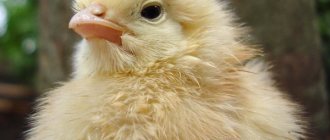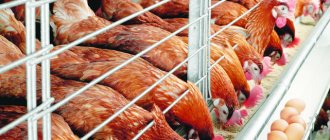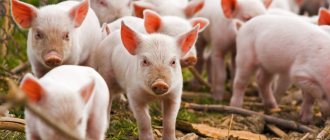Chicken eggs and meat have always been popular products in Russia. The demand and consumption of these goods is growing every year. There are 309 eggs per resident of Russia per year, and this figure is increasing. In 2018, chicken meat production in the country increased by 1.2% to 6.7 million tons.
Of course, the market for meat and eggs is highly competitive, but consumer demand is not completely closed - especially since people are increasingly looking for an environmentally friendly product. How profitable is a chicken business? We will tell you in detail how to open a small farm, we will give approximate calculations of payback and profitability.
1. Which breed of chicken should I choose for home breeding? 2. Egg breeds 3. Meat breeds 4. Conditions for keeping chickens 5. Poultry breeding technologies 6. Business plan for raising chickens 7. Legal registration 8. Personnel 9. Feed 10. Recommendations for feeding 11. Arrangement of the poultry house 12. Arrangement of a walking area 13. Equipment 14. To whom and how to sell finished products? 15. Breeding chickens as a business: profitable or not - profitability and payback
What breed of chickens should I choose for home breeding?
First you need to choose the direction of the business - that is, determine what the birds will be bred for, for eggs or meat. Based on this, we choose the breed: the difference between broilers and laying hens is significant.
If you expect to sell meat, you need diligent birds with a large and soft belly. Specially bred broilers with regular nutrition are able to gain the required weight in 3-4 months.
To hatch eggs, on the contrary, active chickens are needed. It is necessary to equip special areas for walking, provide light and provide other conditions for obtaining eggs of suitable size and quality.
It is customary to buy day-old chicks (and raise them) or pullets 2-3 months old. It is better not to purchase adult birds.
Turkeys
Birds quickly gain weight, and their meat is of high quality. However, they are one of the most capricious birds, and also often contract various diseases. The farmer must organize a warm room for them, protected from drafts. Moreover, they also need a place to walk, otherwise they will slowly gain weight.
Although it is worth noting that experienced farmers are not at all embarrassed by such difficulties. Moreover, the demand for this poultry meat has especially increased recently. Many people are interested in purchasing dietary meat, and if the product is also ecological, demand for it will definitely appear. For the first two years, you can recoup all costs and start receiving stable income.
Turkeys have a seriously developed maternal instinct; they strive to hatch eggs, which is also a significant advantage for the farmer.
Egg breeds
To obtain eggs, it is important to buy good laying hens and a rooster (1 male for 10 females). The bird must lay at least 280-300 eggs per year.
Popular breeds:
- Andalusian blue.
- Loman Brown.
- White Leghorn.
- Brekel.
- Italian partridge.
- Minorca.
- Russian Crested.
Maximum egg production is observed in birds in the first year of life. Then the number of eggs laid decreases by 30-40%. At poultry farms, old chickens are discarded; in households they make up no more than a third of the total flock. The livestock is completely renewed in 2.5-3 years.
It is better to buy pullets yourself at poultry farms (not through markets or resellers). Here the bird comes with documents, you can be sure of its age.
Purchased laying hens are kept in a quarantine zone for up to a month (to be checked for diseases), separately from the general herd.
Set your guinea fowl on Colorado beetles
Poultry in garden beds at the dacha is a real disaster! The birds will dig up all the beds and spoil the harvest. But guinea fowl are an exception; they do not dig in the ground. And pests are a real delicacy for them.
Therefore, it is useful to sometimes let guinea fowl out to graze in the garden. Especially if the potato was attacked by the Colorado potato beetle, a favorite delicacy of these birds. He cannot hide from the voracious beaks; not a single “minke whale” will leave alive!
Guinea fowl are excellent country birds. Firstly, they are winter-hardy and do not catch colds even at -50 C. Secondly, they have strong immunity that resists any infection. And finally, this bird is unlikely to be stolen. Guinea fowl scratch, peck and violently fight off strangers because they are very afraid of strangers.
Unlike domestic chicken, guinea fowl are excellent fliers, so trim their feathers, especially if you let them out for a walk in the garden. This bird is raised for meat. She also lays eggs, but there will be difficulties with them. Remnants of wild instincts force guinea fowl to hide clutches of eggs, and not every summer resident can complete the “quest” to find them.
Carefully monitor the quality of food you give to your guinea fowl. Poultry at the dacha reacts severely to spoiled food - they can get sick and even die.
Meat breeds
Breeding broilers for meat is another line of chicken business.
Popular breeds:
- Foxy Chick.
- Rhode Island.
- Holoshka.
- Cobb-500.
- Gibro-6.
- Broiler-61.
- Ross-708.
It is recommended to purchase chickens from special farms, since it is difficult to breed meat breeds yourself. Chicks (crosses and hybrids) may not retain parental qualities.
Broilers are intensively fattened for 3-4 months, then sent to slaughter. They spend a lot of feed on chickens - to fatten 1 individual in 2 months you will have to spend up to 7 kg of feed.
Birds need quality food and care. They are predisposed to certain diseases. In addition, broilers have a high mortality rate (especially in the first 2 weeks).
Do you want Peking duck or musky duck?
Two varieties of ducks are popular among summer residents: Peking and Muscovy. It’s a shame, but you can breed Peking ducks only if your house is on the outskirts. Otherwise, there is a high probability of problems with neighbors: these birds are quite noisy. It’s a pity, because Peking ducks, especially broiler hybrids, are large, fatty and quickly gain weight.
If you want duck meat, but don’t want to argue with other summer residents, get musk ducks. They are also incorrectly called Indian ducks. These don't quack, but hiss, and then only if they get angry. But they have their own characteristics that are important to know.
Firstly, musk ducklings do not eat in the first days of life, and begin to eat only 3-4 days after hatching. Secondly, they need moving food, so you will have to sprinkle chopped boiled egg on an inclined board to make the crumbs bounce.
And finally, “Indochkas” grow more slowly than their Beijing relatives. Be patient - musk drakes can reach 7-8 kilos, a worthy result!
Conditions for keeping chickens
For the comfort and health of the chickens, for the productivity of the flock in the poultry house, it is necessary to create suitable conditions:
- Lighting. To increase egg production in the poultry house, you need to have good lighting.
- Maintaining the required temperature. Birds do not grow well and lay eggs in temperatures that are too low or high. The normal range is 12-27°C. For the development of chicks, a temperature of 27-30°C is needed.
- The floor in the poultry house should be insulated with boards, straw and sawdust. Straw is only clean.
- Birds keep themselves clean. You just need to put a container with sand or ash. The poultry house is cleaned every week and disinfected every month.
- Chickens should have constant access to fresh air (good ventilation).
- To relieve birds from stress, the house must be soundproofed.
- It is necessary to place convenient feeders and drinkers in the chicken coop.
General information
As in other cases of livestock business, it is necessary to carefully consider organizational issues. A lot of money is spent on the purchase or rental of the poultry breeding complex itself, on the purchase of feed, the purchase and adjustment of all equipment, as well as on the purchase of breeding young animals.
If everything is organized correctly, production can pay for itself within a couple of years. The profitability of such a business is very high, reaching 98%. The size of your investment largely depends on your climate zone.
A turkey can gain up to 145 grams per day, and a turkey can gain about 90 grams. The advantage of turkeys over chickens is that they are practically not susceptible to common diseases, the ratio of slaughter weight to clean meat yield is 81% or more, and the cost of a kilogram of finished product is very low.
For chickens, this figure is much more modest, but broilers can show even 85% meat yield.
Poultry breeding technologies
At the planning stage, a chicken breeding technology is selected. There are 2 main options:
- Floor. The bird retains freedom of movement and gets the opportunity to walk in the fresh air. This technology is more suitable for laying birds, since high activity increases egg production. Farmers can save on maintaining the flock by making homemade feed based on food waste instead of expensive purchased feed.
- Cellular. This option is more often used for breeding meat breeds. Chickens don't need a lot of activity that causes them to lose calories - that's why they are kept in cages. They are fed with compound feeds, which allow them to quickly increase their meat mass. The cage breeding method involves more expenses and labor - feed is expensive, and bird cages need to be cleaned regularly.
Pedigree chickens
I’ll say right away that purebred chickens in a good chicken coop are the most economically viable way to keep poultry. Despite the high initial cost of young hens and cockerels, the increased costs of good food, maintaining one breed while maintaining its inherent characteristics extends over several years.
An owner who has managed to properly organize the process of feeding, cleaning the premises, and creating conditions for hatching chicks and raising young animals will not have any special problems with a thoroughbred bird.
How to become such a master? Very simple. We must not be afraid of difficulties and do not give up if we fail. Any failure is an experience. Gaining experience means overcoming a long streak of failures.
Do you already have experience in raising chickens?
Not really
Advantages of purebred birds
There are several of them:
- Passing on the genetic traits of the breed over many generations.
- Break even with proper bird care . If you keep a good egg-laying breed, you will receive a stable income from eating or selling eggs for several years, which will cover the cost of keeping the bird. If this is a meat breed, you will be provided with good dietary homemade food for several years. Pedigree chickens for meat and egg production will satisfy both needs. Decorative and sporting purebred chickens will generate income by participating and winning competitions.
- A thoroughbred bird has good mental abilities . There will be no riots or scandals in the chicken coop; everyone will obey a certain hierarchy.
- Mostly this is a calm bird , behaving with dignity in all cases. If there is suddenly a commotion in the chicken coop, it means that something serious has happened there that requires the intervention of the owner.
- Pedigree chickens, as a rule, take good care of their offspring , and this ability is passed on from generation to generation.
- They have high vitality and high disease resistance.
- The average lifespan of many bird breeds is 8 – 10 years . Some specimens of the breed live 18–20 years.
Basic rules for cage keeping of laying hens. Breeds best suited to being kept in cages
Read
Ways to heat a chicken coop in winter. Rating of electric heaters and heating options without electricity
More details
Shelf life of laying hens - how long do hens of different categories lay eggs and how many eggs can they lay per year?
Look
Breeding laying hens as a business for beginners. Organization and estimated profitability for the year
Further
Flaws
There are fewer of them than advantages:
- The main disadvantage is the high initial costs when purchasing poultry , when purchasing quality feed and creating acceptable living conditions in the chicken coop.
- Pedigree chickens require a large range of green grass . There is no point in keeping the breed on bare ground in a cramped enclosure. This will lead to illness and death of the bird.
- The breed requires protection from inbreeding . Each new generation needs a purebred cockerel from a different nest.
- It is necessary to protect your chickens from crossing with crossbred roosters . A metal or nylon mesh, stretched during summer and winter walks, will help with this.
Choosing a rooster for laying hens. Age of bird to purchase and signs to look for when purchasing
Read
Composition of a chicken family - how many chickens do you need per rooster for egg, meat-egg and meat production?
More details
Will chickens lay eggs without a rooster, and is one needed in the herd? Advantages and disadvantages of keeping roosters and hens together
Look
Business plan for raising chickens
According to the terms of the plan, the businessman develops an egg business - that is, he breeds chickens to produce and sell eggs, not meat. Then the initial costs will be lower - there will be no need to purchase refrigeration equipment or organize a place for slaughtering poultry. The business can be started with small investments and then expanded.
Table 1. Initial costs for a chicken breeding business.
| Expense item | Cost, rub. |
| Registration | 50 thousand |
| Creation and equipment of a chicken coop | 150 thousand |
| Purchase of pullets, 400 pcs. (Hisex Brown breed) | 95 thousand |
| Feed (for a month) | 20 thousand |
| Salary, 2 people. | 40 thousand |
| Additional expenses | 90 thousand |
| Total | 445 thousand |
The sale of products is expected in a city with a population of more than 1 million people. Additional costs include utility bills, promotion, and packaging. Taxes do not appear in the calculations.
Poultry farm vs bazaar
In the collective consciousness of Russian residents, the idea that one should go to the market to find low prices is firmly rooted. In fact, this has not been the case for a long time. Where are the real savings without sacrificing quality? At poultry farms!
It's all about the wholesale scale of production. Chickens, turkey poults and other chicks are hatched there in hundreds and even thousands. Why is pasta cheaper in a hypermarket than in a small store near your home? For the same reason, chickens are cheaper from the factory. And there are always the same prices, which are usually indicated on the website. And the seller at the market may demand more if you seem too trusting to him.
Only at a poultry farm you are guaranteed to be sold the desired breed or hybrid of poultry. Buying second hand is always a lottery. And even if you buy the same chickens or goslings from a poultry farm on the market from your car, you are already overpaying for space, delivery, etc.
If you nevertheless bought chicks at the market, do not immediately let them into the common poultry house. Let them undergo a 10- or 15-day quarantine in a separate room. If you introduce an infection, there is a high risk of death of the entire livestock. Be careful!
Legal registration
If you plan to open a small enterprise or household, the business is conducted in the form of an individual entrepreneur (individual). If you plan to have a larger farm, the LLC (legal entity) form is suitable.
When registering, the OKVED code 01.47 “Raising poultry” is indicated.
To start a business, you need to visit many authorities and obtain the following documents:
- certificate of registration of private household plot (personal subsidiary plot);
- contract for veterinary services at the regional veterinary station;
- permission from SES and Fire Supervision;
- conclusion of Rospotrebnadzor.
The most difficult thing is to get positive conclusions and permissions. To organize a farm, it is important to study all the requirements and standards that apply to chicken coops and the conditions for keeping poultry. All this must be taken into account when organizing the farm.
Buying an incubator
For home breeding of birds, purchase special equipment - an incubator - for artificial breeding of chicks . The characteristics and functionality of the device will help your business become successful and profitable.
Which incubator is better to choose?
Before purchasing an incubator, decide on the number of eggs. It is worth loading eggs with a reserve, because some of the eggs will be rejected, and some will turn out to be cockerels.
There are three types of incubators:
- Domestic. Loading from 10 to 280 eggs, compact dimensions. Suitable for a small household.
- Farmer's. Loading from 300 to 500 eggs, automatic systems and multifunctionality.
- Industrial. Loading from 1000 eggs, automated system for large production.
Now let's look at the functions that will help the stable development of the enterprise:
- The automatic mechanism for turning eggs in the incubator will eliminate the need to be near the device and manually move the eggs;
- Electronic thermostat that quickly responds to any temperature fluctuations;
- Plastic or foam material of the device. Polystyrene foam provides thermal insulation, but breaks easily. Plastic is stronger, but needs insulation;
- The power supply to the incubator should not be interrupted, so choose models with a connection to a battery;
- Buy incubators with warranty service, manufactured to strict standards;
- If you plan to breed waterfowl in the future - ducks and geese - choose models with a moisture meter.
Staff
To organize a small farm you will not need many workers. At the start, the herd will be 400 heads - 1 hired employee will monitor this number.
It is necessary to organize the delivery of food, all necessary products to the farm and transportation of the finished product to the buyer. Therefore, a driver (with a car) will be required.
An accountant will prepare reports and document flow. You can find a specialist remotely by contacting an accounting firm.
At first, the functions of a sales manager will be performed directly by the businessman.
When organizing a household, the owner himself can do the work - this will reduce monthly expenses. But when expanding the farm, workers will have to be hired.
Summarizing
Having considered several families of birds that can be raised at home, we come to a conclusion. What kind of poultry is profitable to raise at home as a business? Every direction has profitability! The main thing is to follow all the rules and regulations in order to get quality products. Poultry farming does not require particularly complex approaches.
Of course, the greatest demand is currently for chicken products. But other productions will not leave the breeder behind in the loss. In any case, the choice remains with the farmer. Moreover, you can simultaneously raise several families of poultry.
Before opening your own production, you need to study in detail all aspects of the process. Responsibility is assessed first. No customer wants to receive mediocre products! Therefore, the breeder needs to monitor the health of the livestock and take responsibility for supplying the market.
It is important to calculate the costs per individual and the amount of income received from its sale. Then multiply by the number of heads of birds, draw a conclusion about how big the profit will be and whether it is worth the investment of money and labor.
In any case, the poultry farmer will not suffer losses. But it’s worth assessing the realistically possible profit in advance and comparing it with what you expect. Self-production should be approached constructively, all positive and negative aspects should be considered.
Determination and a responsible approach are the main aspects in creating a successful business production.
What do you think is the best type of bird to raise at home? Share your opinion in the comments.
Subscribe to site updates and our channel “Chicken” in Yandex.
Did you like our tips? Share with friends on social media. networks!
Feed
When breeding broilers, it is important to choose the right feeding system, which will allow the chickens to quickly gain meat and bring their weight to the desired level.
2 ways to feed meat birds:
- extensive;
- intensive.
The extensive fattening method does not require large expenses - it is suitable for entrepreneurs who do not have the money for large investments. Chickens are given compound feed and regular grain with various additives - boiled potatoes, cake and meal, vegetables, herbs, meat and bone meal. In the first 2-3 months, feeding is high-calorie, then the energy value of food decreases (chickens should not be overfed).
Intensive fattening requires additional investments, but this technique is better suited for breeding broilers. The birds are kept in cages and fed with ready-made feed. She moves little and grows quickly.
Quails - small but distant
Quails are an excellent counterbalance to ostriches. The first advantage of such production is immediately clear - the small size of the birds does not require much space on the farm. Everyone knows about the healing properties of quail eggs. They are allowed to feed small children.
The meat has a unique taste, with a low percentage of fat. The price of quail products is quite high. And the growing costs are small. Birds do not require special care and eat little.
It should be noted that not everyone can open a quail farm. This is due to legal regulations according to which the poultry house must be located away from residential buildings. More precisely, no closer than 100 meters (there should be a green zone around). If such conditions can be met? Then you can safely open production, as it will bring good profits.
For cultivation you will need cages, brooders for young animals, feed and food vitamin supplements. Both poultry meat and eggs are in great demand.
Feeding recommendations
It is necessary to organize a balanced diet for the bird so that individuals receive the required amount of elements. You should choose industrial feeds carefully - not all are suitable.
You can prepare the grain mixture yourself. This way you can reduce costs and choose the optimal food recipe.
The most popular recipe is:
- corn – 5 kg;
- wheat – 1.5 kg;
- barley – 1 kg;
- peas – 0.5 kg;
- sunflower cake – 0.8 kg;
- flour (fish, meat and bone) – 0.8 kg;
- feed yeast – 0.3 kg;
- chopped or fresh grass – 0.5 kg;
- vitamin and mineral supplement - 0.15 kg;
- salt – 0.03 kg.
Chickens really need calcium, so chalk and charcoal containing this element should be constantly added to the feed. Salt is also useful - it improves digestion.
The daily feed requirement for one chicken is 130-150 grams.
Preparation
If the decision to breed chickens is finally made, then the first step is to determine the purpose of this activity. The choice of breed, arrangement of the poultry house and the necessary feed depend on it. After all, the meat of laying hens is very inferior in taste to the meat of meat and even meat-egg breeds.
The next decision to be made is about the duration of the content: seasonal or permanent. The result determines what kind of chicken coop design is needed - a light one with a walking area or an insulated barn that will help the birds to winter normally.
It is necessary to provide a place for the chickens depending on their age and needs, and also take care of the feed: make it yourself or buy ready-made ones.
Poultry house arrangement
You can raise chickens only in a country house or in a village - that is, outside urban conditions. When building a chicken coop and choosing flooring, you need to proceed from the following calculation: per 1 sq. m can accommodate 2 birds. Up to 6-7 heads coexist in a cage.
The poultry house should be warm and light (lit at least 13-14 hours a day). We pay special attention to the floor. The height of the insulation is at least 15 cm (optimally up to 50 cm).
Ventilation must be arranged so that rodents cannot enter the room. The latter is an additional risk factor, since mice/rats carry diseases and infect birds. If you make ordinary windows, they need to be covered with protective nets.
Drinkers and feeders are located along the walls, and nests are located in the corners. The height of the room should not be lower than 2 m; it is better to reinforce it with wooden logs, and stitch the racks with boards. It is better to make the roof traditionally pitched.
Tags
Swimming pool (2) Safety (7) Water supply (2) Pests (9) Lawn (3) Trees (25) Livestock (1) Fences (3) Healthy skin (3) Health (66) Interesting (1) How to lose weight? (4) Sewage (3) Well (4) Shrubs (14) Pump (1) Unpretentious varieties of vegetables (13) Unpretentious varieties of fruits (8) Unpretentious varieties of berries (10) Vegetables (26) Cucumbers (2) Heating (2) Stoves (1) Benefits and harm (16) Other (2) Poultry farming (6) Seedlings and seedlings (19) Garden paths (1) DIY (7) Seeds (12) Well (1) Tomatoes (4) Fertilizers (4) Fruits (26) Flower garden (5) Berries (21)
Arranging a walking area
Laying hens need physical activity for better egg production. Therefore, they need a place to walk (aviary). You can buy a ready-made mesh enclosure or create one yourself. It is better to place it on the eastern side of the chicken coop - on the side where the sun rises. We place a manhole in the building so that birds can easily enter the walking area.
The fence of the enclosure should be mesh so that sunlight penetrates through it. Having natural light is important for hens (talking about laying hens).
The height of the fence should reach 150-180 cm. Then the birds will not be able to fly over the fence and scatter across the area.
In the enclosure under a small canopy you need to install equipment: drinking bowls, feeders, boxes with sand and ash.
Organizational aspects
Organization of production requires appropriate investments. So, at the initial stage it is necessary to think about the place where the birds are kept. It is best to rent it, because construction will cost much more. In addition, it will require a special investment of time, which will also negatively affect the development of the business.
Construction should begin after the start of production, and then only if it really begins to generate stable income for its owner.
Once found, the premises will need to be reconstructed and then improved. At the initial stage, you simply cannot do without the following purchases:
- cells;
- feeders;
- heating devices, especially when it comes to the cold season;
- drinking bowls;
- equipment for cleaning the barn.
The amount of inventory required must be calculated based on the total production volumes.
Equipment
After a place for the poultry house has been found, the building itself needs to be erected. Specialized materials and construction plans are available for sale. If your budget allows, you can order a ready-made poultry house from professionals.
In order to save money, you can do it simpler: during construction, use available building materials (boards, slate, brick, cinder block, other types of building stone).
In the chicken coop we organize:
- nests;
- perch;
- vestibule;
- feeders and drinkers;
- shield for collecting litter;
- walking area.
The poultry house must be insulated and protected from precipitation. Inside you need to equip a ventilation system, install fluorescent lamps or IR lamps. If there is a large flock, automatic drinkers and a food supply system are installed in the chicken coop.
If the business is focused on selling meat, you need to set up an area for poultry slaughter and buy refrigeration units for storing the product.
Poultry cutting line (chicken, turkey, duck) 1500 heads per hour, “Compact”
Negotiable price Buy
How to raise poultry in the countryside during the summer
Even when drawing up a business plan, you need to think about how you will sell your product. There are two ways: open your own points of sale or enter into agreements with stores. The packages of documents here will be different. To transport eggs you will need cardboard packaging, which you need to order from printing factories; this is another set of documents.
Proper raising of poultry and keeping it in conditions that comply with GOST is not everything in your new business; you also need to study competent slaughter technology. This is the only way to obtain a quality certificate from veterinary services.
To whom and how to sell finished products?
There are several directions for selling eggs and chicken meat:
- Cooperation with retail and wholesale retail stores. With large customers, the poultry farm will get back on its feet much faster.
- Sales at food markets. You can sell goods to other sellers or open your own outlet.
- Sales to private individuals. Chicken eggs and meat can be sold to residents of the locality where the farm itself is located. You can also organize days when the car will go into the city and sell products to residents of the block and nearby houses.
- HoReCa segment. Sales to restaurants and canteens.
To market and increase sales, advertising is needed. How can you advertise a product:
- develop a brand and marketing attributes;
- offer goods at prices favorable to the buyer;
- conduct BTL promotions;
- spread information about meat and eggs through word of mouth.
Hybridization in poultry farming - broilers
In poultry farming, interbreed hybridization and crossing are used to quickly gain live weight and increase fertility. Broilers of ducks, geese, guinea fowl and chickens are bred. Broiler chicken is usually found on sale, a hybrid obtained by crossing several breeds of chickens. Too rapid growth of poultry affects the quality of meat. It is less tasty and nutritious. This link will tell you about the breeds of broiler ducks.
Broilers bring good income, but large areas are required for their breeding. Therefore, it is advisable to grow it in an industrial poultry farm.
Chickens
Feeding chickens is slightly different from the diet of adult birds. On the first day, the chicks' food should be small cereals, cottage cheese, and a boiled egg. From the third day you can give greens little by little. All mashes are made fresh, after an hour they become unfit for food. The feeders are cleaned of residues and rinsed with a solution of potassium permanganate. Gradually, the amount of feed is increased, vitamins and minerals are introduced.
Until two months of age, only crushed cereals are given.
To breed young animals, you need to get a hen or buy an incubator. Only fresh eggs can be placed in it, the storage temperature of which is at room temperature. A prerequisite for egg fertilization is the presence of a rooster.
It would be good if the equipment has an automated egg turning system, humidity and temperature control. A few days later, an ovoscopy is performed, where it is clearly visible which egg is fertilized and which one should not be expected to produce a chick. The survival rate of young animals with a hen is much higher than without one. But egg breeds of chickens do not have this instinct.
Preparing a place for chickens
Chickens need warmth, light and good food. Therefore, placing them in a large box or a special brooder, they are heated with an infrared lamp, lowering the temperature gradually - 5 degrees weekly. At the age of 21 days, in warm weather, the chicks can be walked in an open area. They monitor the behavior of the chicks in order to correctly regulate the heating temperature and the availability of water.
Drink and feed for chickens
The drink is slightly acidified with food acid (for example, citric acid) due to the fact that the acid-base balance of the stomach has not yet been formed. Compound feed is selected according to age or fed with crushed cereals, cereals, nettle greens or dandelion leaves. But when fed with special food, they get sick less often.
The birds are kept in a warm special brooder for up to 8 weeks, then they are transferred to a place where adults are kept. At approximately 180 days of age, egg laying will begin.
Signs of disease
The first signs of disease are obvious, but only for those who regularly monitor chickens. They become lethargic, lose their appetite, and sometimes diarrhea. Only a qualified veterinarian can make a diagnosis, but many diseases can be easily distinguished by the nature of bowel movements and characteristic symptoms. And they are often treated with broad-spectrum antibiotics.
A sick bird must be isolated from a healthy bird to avoid an epidemic in the yard. The poultry house is disinfected along with its equipment. The diet includes vitamins, herbs, and minerals.
To prevent fluff eaters, they place ash and sand in which the chickens “bathe.”











